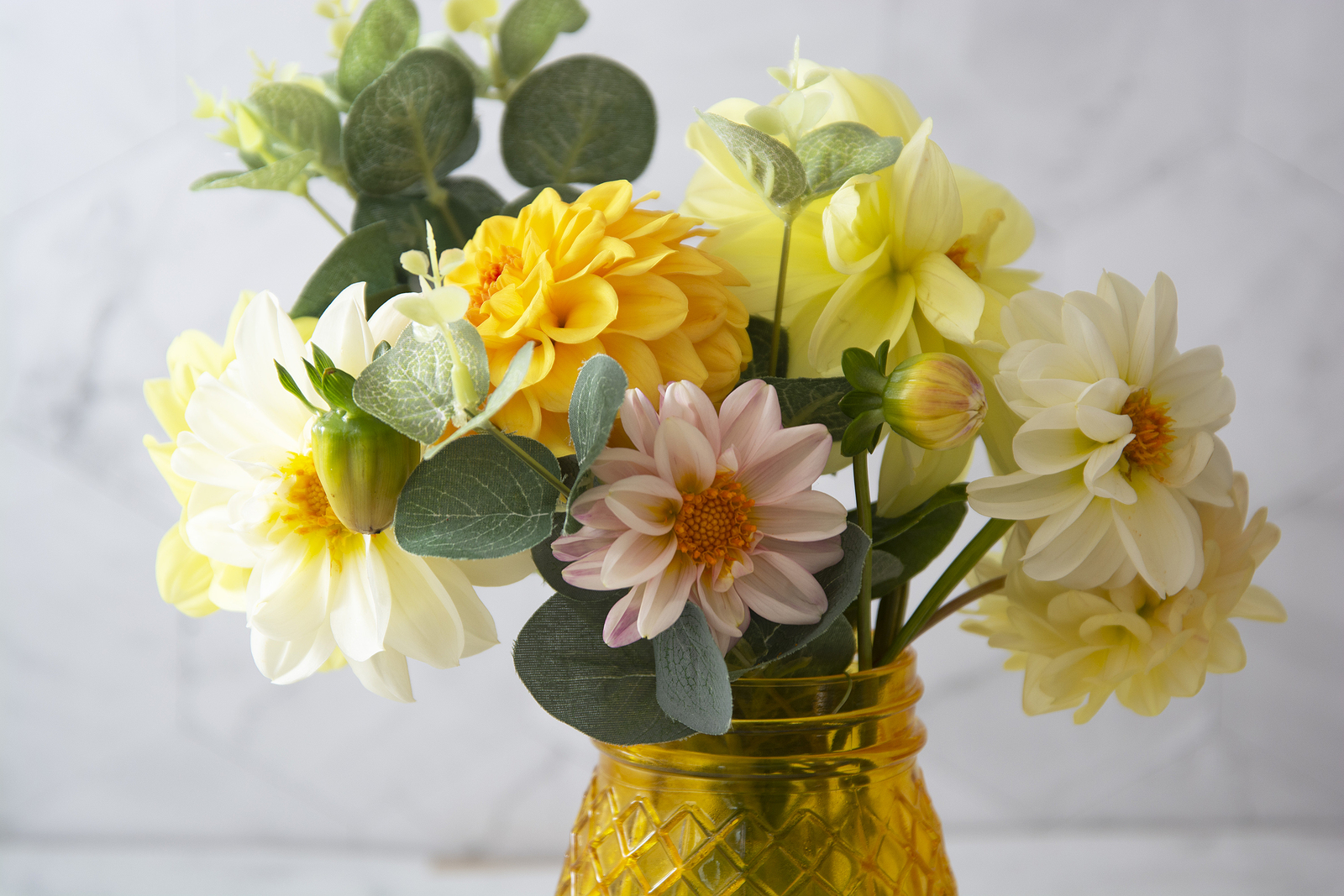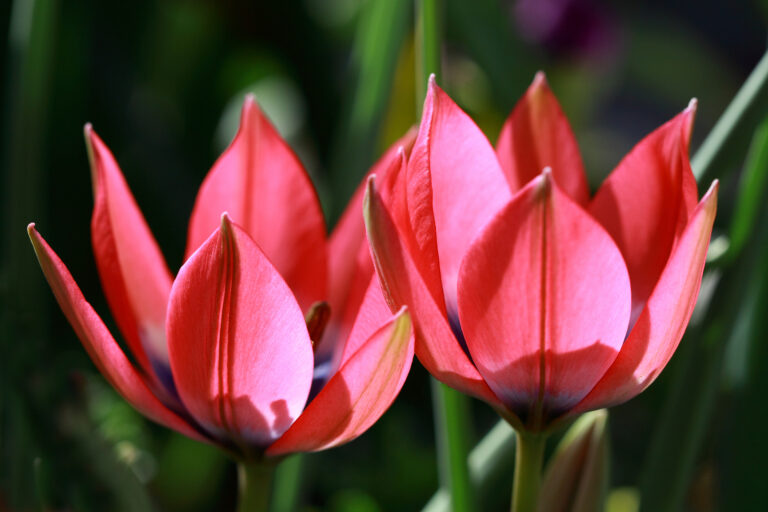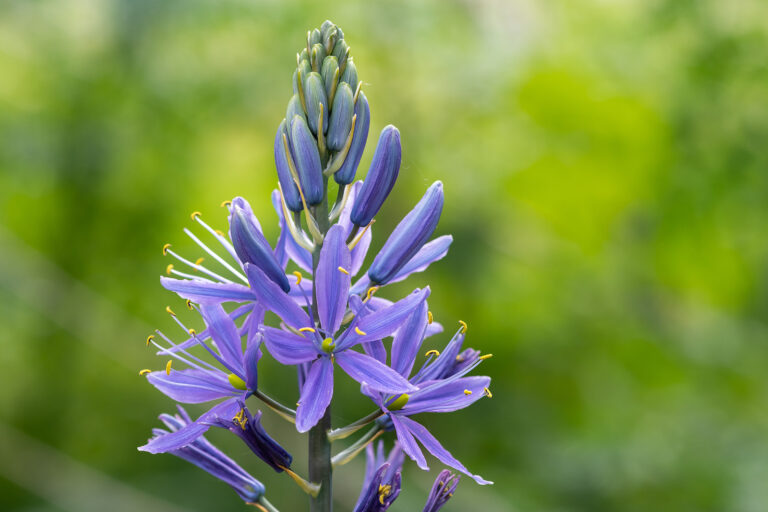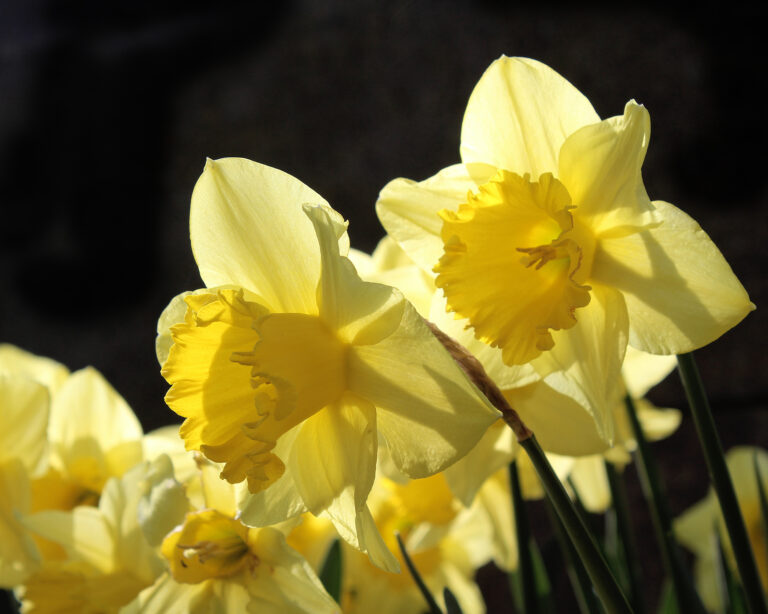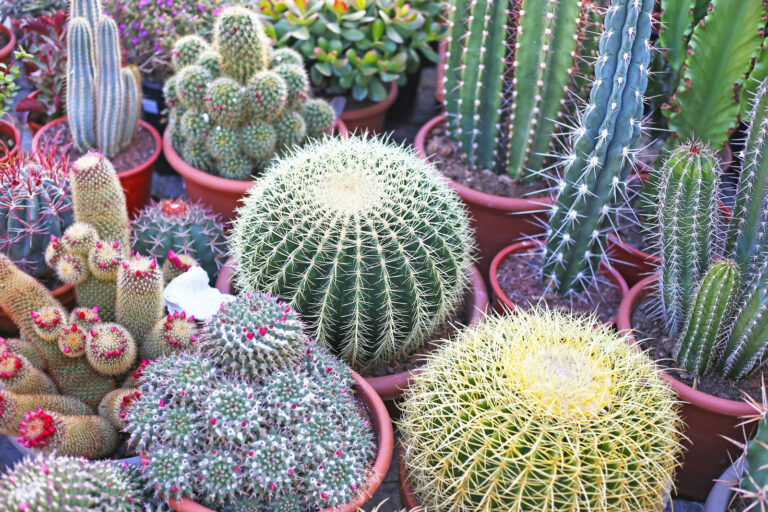11 Flowering Bulbs for Cutting
Bulbs are remarkably beautiful flowers and they are remarkably beautiful cut flowers. Bulbs flower in a wide range of colors, forms, and sizes. They can be grown indoors as well as out, and they are relatively easy to grow. As cut flowers they certainly rival annuals and perennials.
Botanically speaking a bulb is an encased leaf bud or flower bud surrounded by fleshy layers or scales attached to a fibrous base from which roots grow. Many other flowers that are not true bulbs are commonly classed as bulbs–corms, tubers, and rhizomes.
Spring-flowering bulbs are often termed “fall bulbs” because they are planted in late summer or fall for bloom the following spring. “Spring bulbs” are planted in spring and flower in late summer or autumn. The spring-flowering bulbs include tulips and narcissus. The late summer and autumn flowering bulbs include gladiolus and dahlias.
Like annuals and perennials grown for cutting, bulbs grown for cutting are preferably grown in a sunny part of the garden devoted to flowers to be sure for cutting. That way the main bed and borders are not denuded when flowers are cut for use in the house.
Here are 11flowering bulbs often grown for cutting. To get simple how-to-grow tips for each, just click on the botanical name in red.
Spring-flowering bulbs for cutting
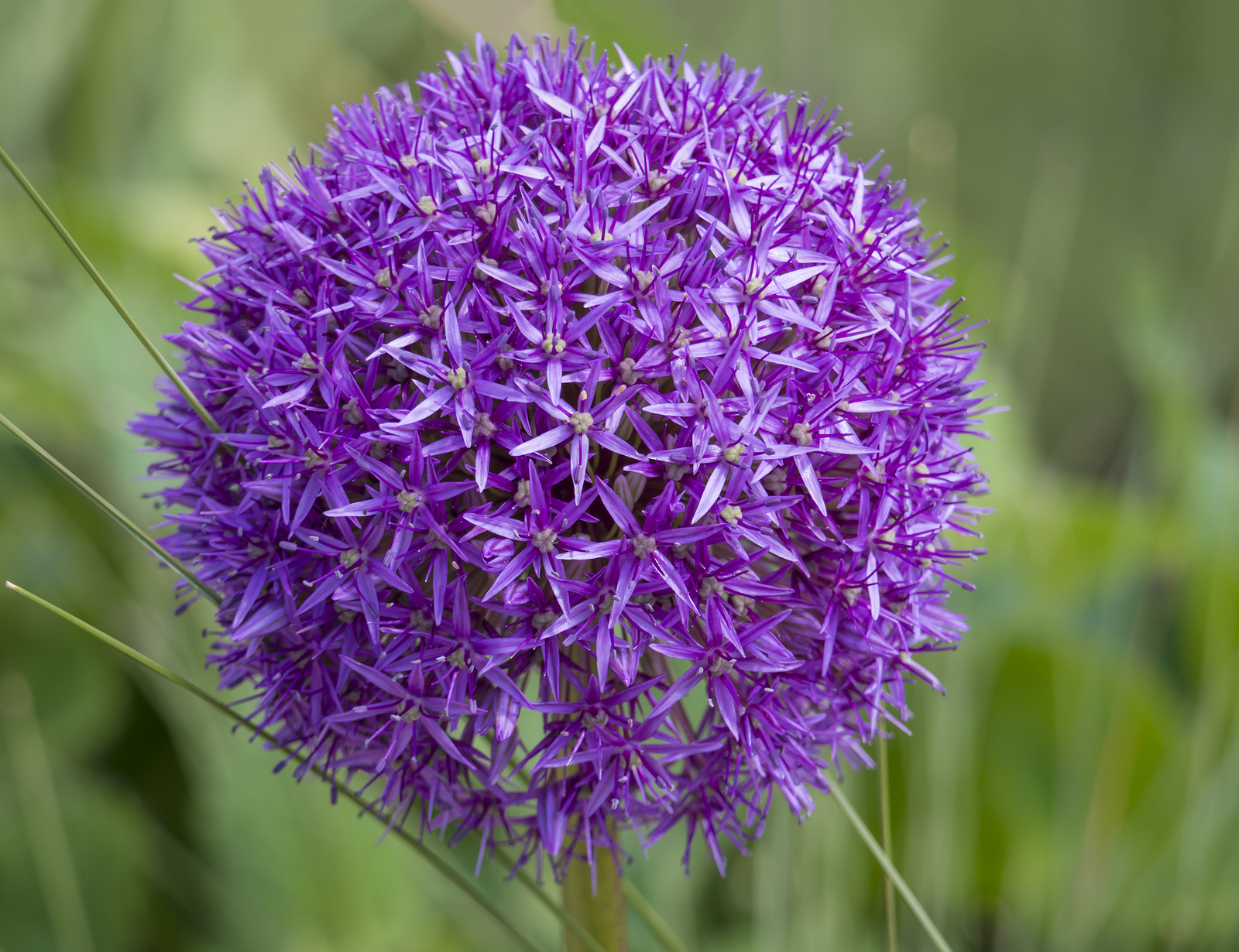 Allium aflatunense (Persian onion). These spectacular hemispherical flowerheads consist of hundreds of pale violet flowers. The heads open on stout stems as the strap-like leaves wither. The plants grow from bulbs or rhizomes. Grows 2.5 to 5 feet tall. They are excellent cut flowers and their dried seed heads are used in floral arrangements.
Allium aflatunense (Persian onion). These spectacular hemispherical flowerheads consist of hundreds of pale violet flowers. The heads open on stout stems as the strap-like leaves wither. The plants grow from bulbs or rhizomes. Grows 2.5 to 5 feet tall. They are excellent cut flowers and their dried seed heads are used in floral arrangements.
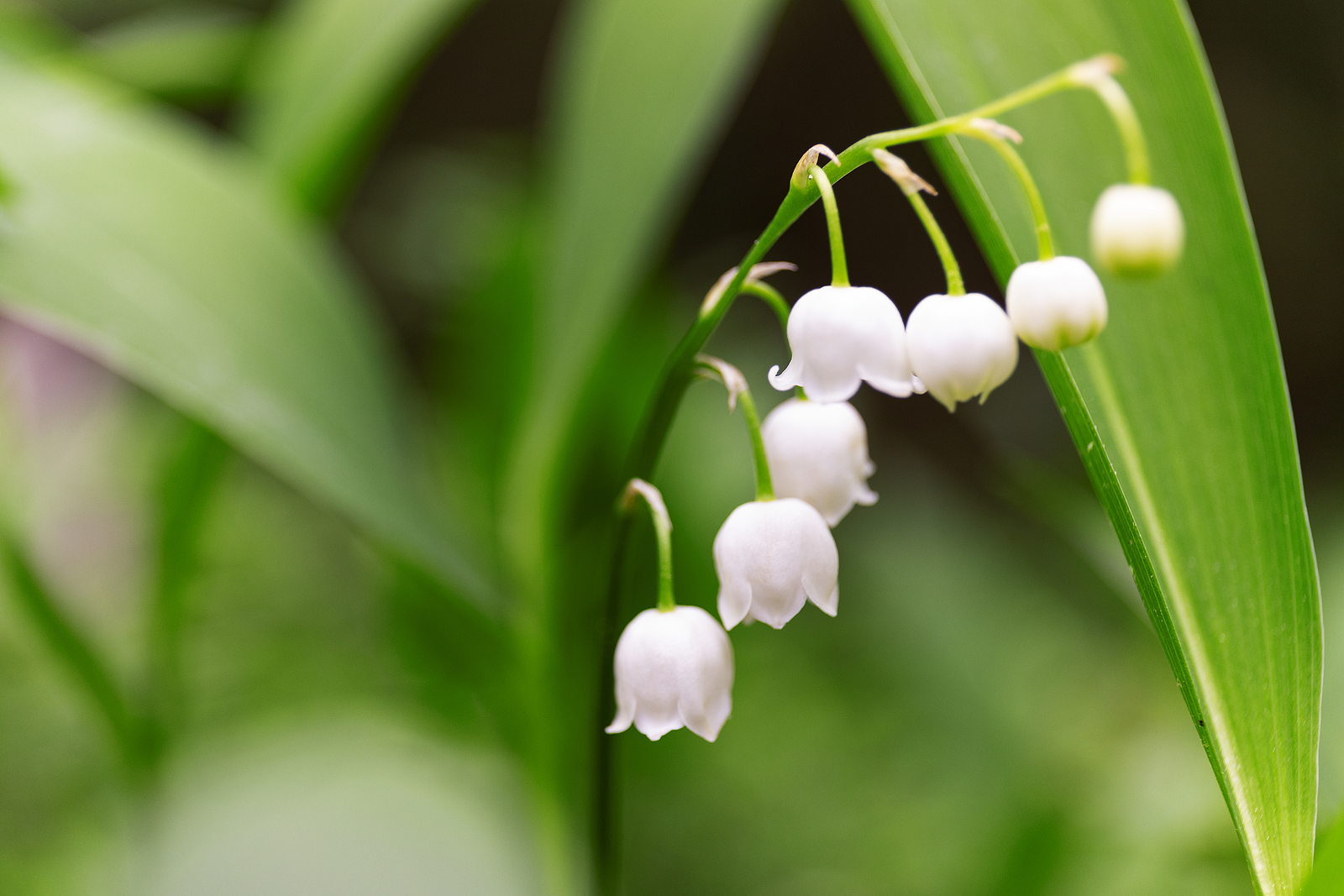 Convallaria majalis (lily-of-the-valley). Lily of the valley bears up to 10 white or pinkish bell-shaped flowers that hang from threadlike stalks on gently arching stems. The mid-green leaves form in pairs. The plant grows 6 to 8 inches tall and can be grown in sun or partial shade in humus-rich damp but well-drained soil. Best planted between autumn and early spring with the crowns just below the surface. Lily of the valley can be forced indoors at room temperature in winter.
Convallaria majalis (lily-of-the-valley). Lily of the valley bears up to 10 white or pinkish bell-shaped flowers that hang from threadlike stalks on gently arching stems. The mid-green leaves form in pairs. The plant grows 6 to 8 inches tall and can be grown in sun or partial shade in humus-rich damp but well-drained soil. Best planted between autumn and early spring with the crowns just below the surface. Lily of the valley can be forced indoors at room temperature in winter.
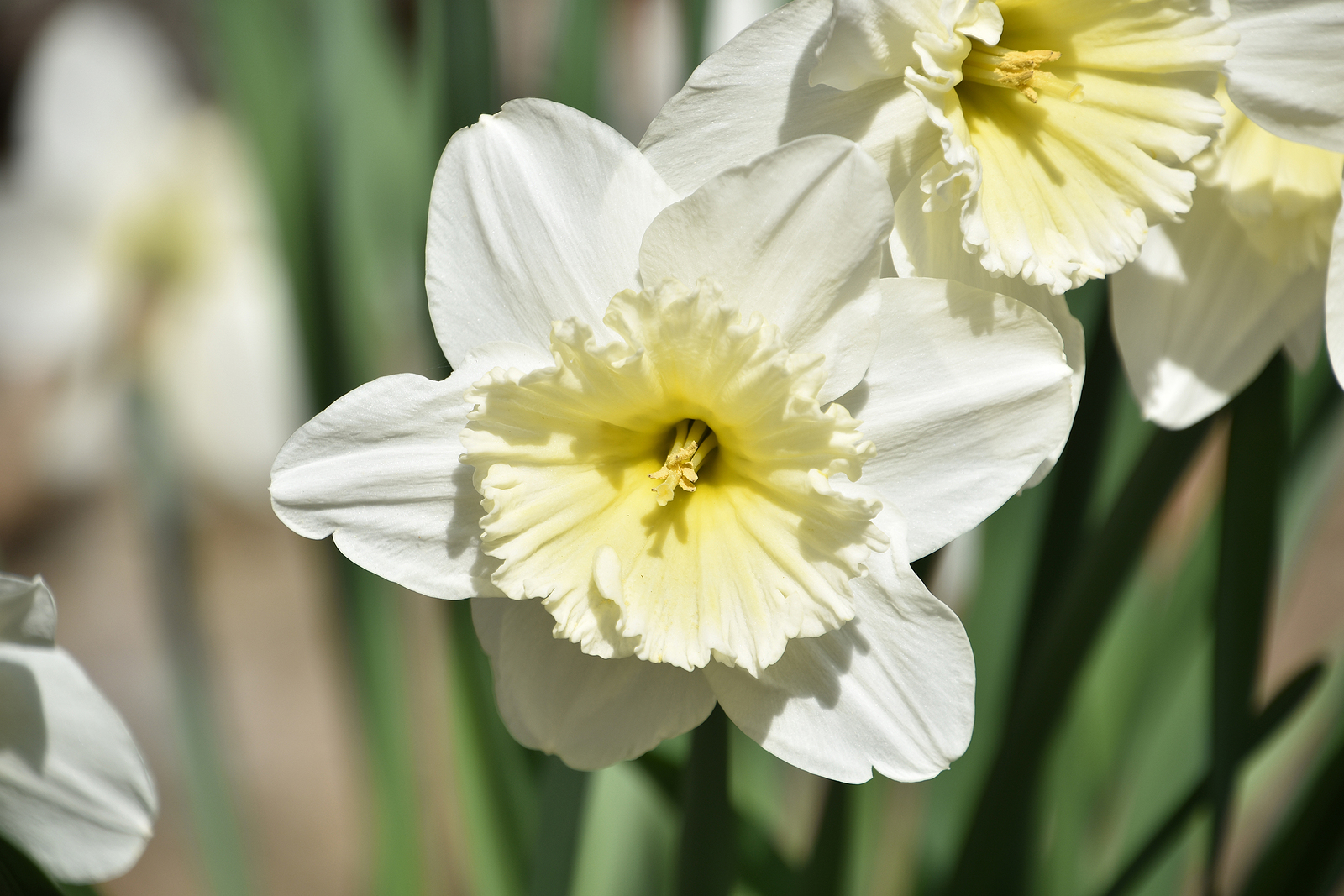 Narcissus hybrids (daffodil, narcissus). Narcissus is a genus of about 50 species of bulbous perennials. All are grown for their attractive flowers, borne in spring, sometimes in autumn or winter. Narcissus with single, long trumpet-like flowers is called daffodils. Those with clusters of small flowers on each stalk are called narcissi. There is little botanical difference between daffodils and narcissi. Narcissus are easy to grow, long-lived plants. Individual flowers last for several weeks in cool weather. There are early-season, mid-season, and late-season varieties. There is short and tall-growing narcissus. Plant narcissus and daffodils in mid-autumn in Zones 3-7; plant in late autumn to early winter in Zones 8-11.
Narcissus hybrids (daffodil, narcissus). Narcissus is a genus of about 50 species of bulbous perennials. All are grown for their attractive flowers, borne in spring, sometimes in autumn or winter. Narcissus with single, long trumpet-like flowers is called daffodils. Those with clusters of small flowers on each stalk are called narcissi. There is little botanical difference between daffodils and narcissi. Narcissus are easy to grow, long-lived plants. Individual flowers last for several weeks in cool weather. There are early-season, mid-season, and late-season varieties. There is short and tall-growing narcissus. Plant narcissus and daffodils in mid-autumn in Zones 3-7; plant in late autumn to early winter in Zones 8-11.
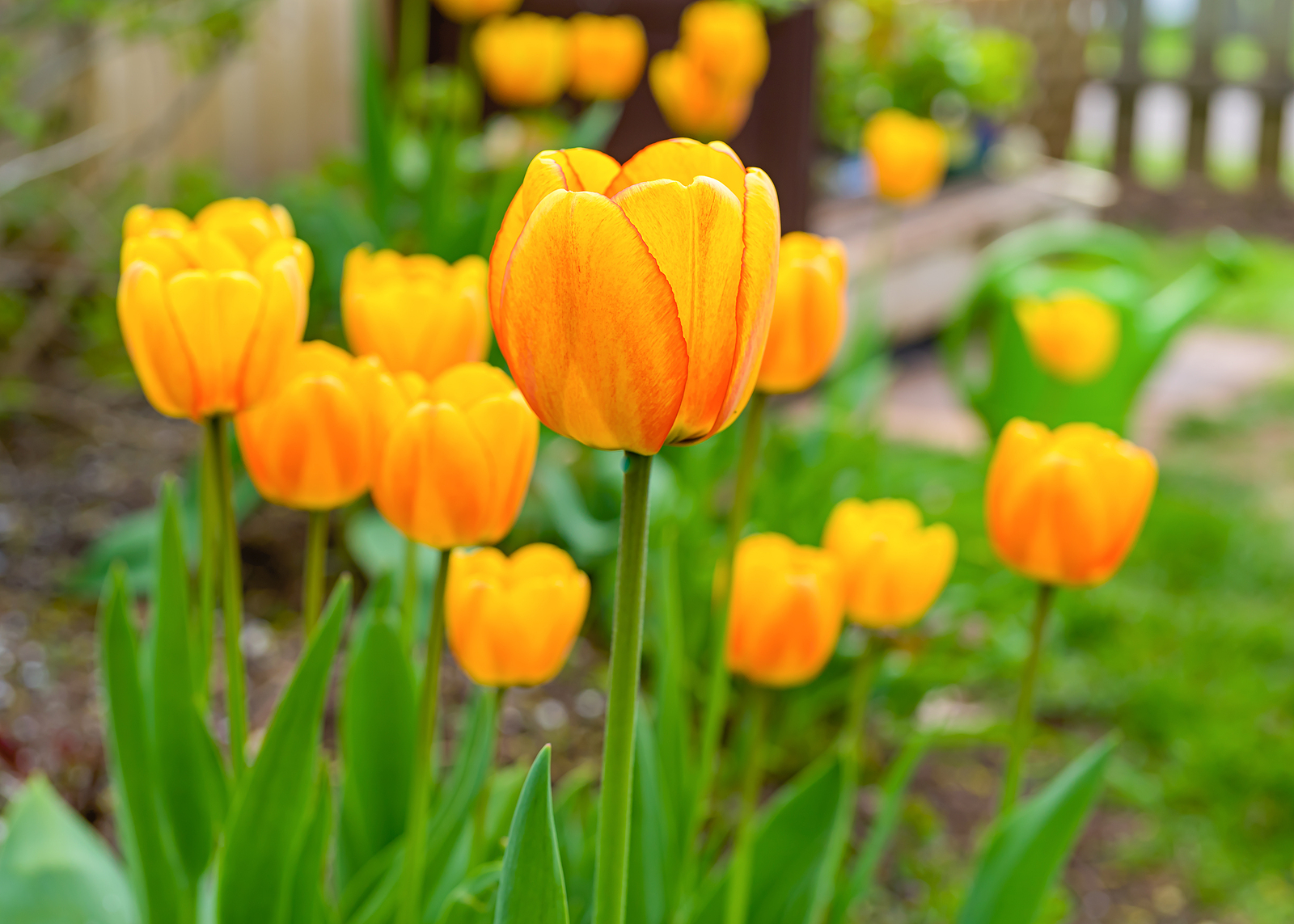 Tulipa hybrids (tulip). Tulips are classic spring-blooming bulbs prized for their showy flowers that come in a wide range of colors–nearly all colors except true blue. Many tulips are bicolored. the most familiar tulips have elongated cup-shaped blooms, but there are also tulips with bowl-shaped blossoms and double-flowered cultivars. There are goblet- and star-shaped tulip blooms as well. There are about 100 species of tulips and hundreds of named cultivars. All are organized into 15 divisions based on flower shape and origin. Grower catalogs use the divisions to organize their offerings. Roughly, tulips are divided into two groups, species tulips, and hybrid tulips. While all tulips bloom well the first year, many decline in the following years, especially some hybrids. Choose tulips from the following division for best performance: Darwin Hybrid Tulips, Triumph Tulips, Kaufmanniana Tulips, Fosteriana Tulips, and Greigii Tulips.
Tulipa hybrids (tulip). Tulips are classic spring-blooming bulbs prized for their showy flowers that come in a wide range of colors–nearly all colors except true blue. Many tulips are bicolored. the most familiar tulips have elongated cup-shaped blooms, but there are also tulips with bowl-shaped blossoms and double-flowered cultivars. There are goblet- and star-shaped tulip blooms as well. There are about 100 species of tulips and hundreds of named cultivars. All are organized into 15 divisions based on flower shape and origin. Grower catalogs use the divisions to organize their offerings. Roughly, tulips are divided into two groups, species tulips, and hybrid tulips. While all tulips bloom well the first year, many decline in the following years, especially some hybrids. Choose tulips from the following division for best performance: Darwin Hybrid Tulips, Triumph Tulips, Kaufmanniana Tulips, Fosteriana Tulips, and Greigii Tulips.
 Zantedeschia aethiopica (calla lily). Calla Lily—botanical name Zantedeschia–is a perennial marginal or bog plant with large, arrow-shaped dark green leaves. In summer, it produces typically white petal-like spathes, each with a yellow spike or spadix in the center. The spathes of some cultivars can be pink, yellow, or red-orange. Calla lilies are tender plants; they can be severely injured by frost. In Zones 8 to 11, plants can be started indoors in late winter or early spring and moved to the garden after all danger of frost is past. In Zones 2-7, plant calla lilies in containers in spring after all danger of frost has passed. Calla lilies in pots can be moved under an overhand or indoors if cold weather is forecast.
Zantedeschia aethiopica (calla lily). Calla Lily—botanical name Zantedeschia–is a perennial marginal or bog plant with large, arrow-shaped dark green leaves. In summer, it produces typically white petal-like spathes, each with a yellow spike or spadix in the center. The spathes of some cultivars can be pink, yellow, or red-orange. Calla lilies are tender plants; they can be severely injured by frost. In Zones 8 to 11, plants can be started indoors in late winter or early spring and moved to the garden after all danger of frost is past. In Zones 2-7, plant calla lilies in containers in spring after all danger of frost has passed. Calla lilies in pots can be moved under an overhand or indoors if cold weather is forecast.
Summer-flowering bulbs for cutting
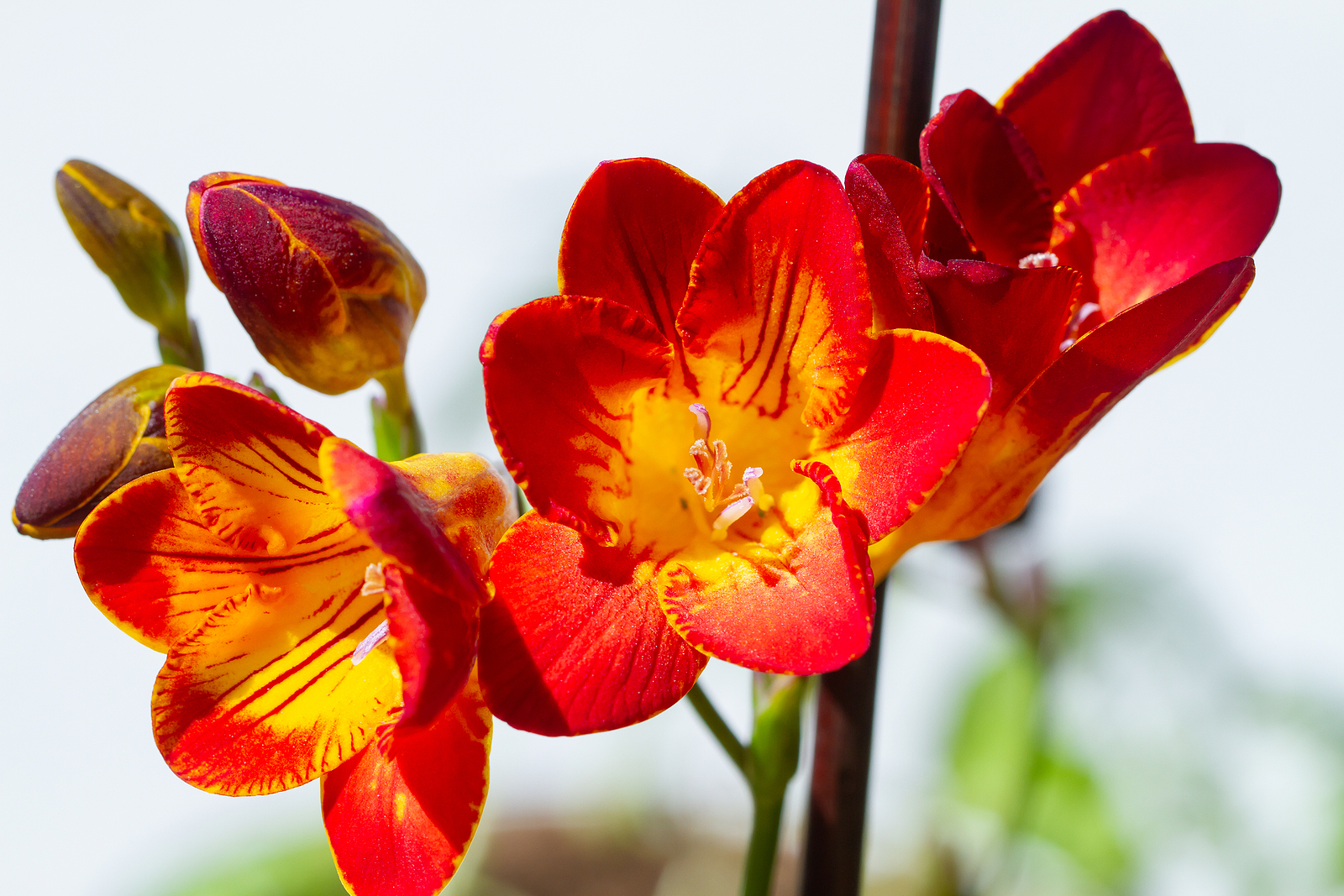 Freesia X hybrida (freesia). Freesias are commonly grown for their fragrance as well as their graceful racemes of colorful, funnel-shaped flowers. Freesias bloom from late winter to early spring. Flowers are held erect in dense racemes at the end of arching, often leafless spikes. Blooms can be white, pink, red, lavender, purple, blue, yellow, and orange. Some blooms are bi-colored. In cold climates, freesias are easily grown in pots in sunny windows. Freesia corms can be planted in spring in all growing zones. In Zones 9 to 11, corms can be planted in fall for early spring blooms. Plant freesias in beds, borders, and containers. They are a great choice a cottage garden or cut flower garden or fragrance garden.
Freesia X hybrida (freesia). Freesias are commonly grown for their fragrance as well as their graceful racemes of colorful, funnel-shaped flowers. Freesias bloom from late winter to early spring. Flowers are held erect in dense racemes at the end of arching, often leafless spikes. Blooms can be white, pink, red, lavender, purple, blue, yellow, and orange. Some blooms are bi-colored. In cold climates, freesias are easily grown in pots in sunny windows. Freesia corms can be planted in spring in all growing zones. In Zones 9 to 11, corms can be planted in fall for early spring blooms. Plant freesias in beds, borders, and containers. They are a great choice a cottage garden or cut flower garden or fragrance garden.
 Gladiolus hybrids (gladiolus). Gladiolus are grown for their showy spikes of usually open, funnel-shaped flowers borne from spring to early autumn. Each spike can hold up to thirty large flowers. Plant gladiolus corms in the garden as soon as the danger of frost has passed in spring. In hot-summer areas (Zones 8-11) plant gladiolus in late winter. For a succession of bloom, plant gladiolus every 2 or 3 weeks. Large corms yield more blooms than small corms.
Gladiolus hybrids (gladiolus). Gladiolus are grown for their showy spikes of usually open, funnel-shaped flowers borne from spring to early autumn. Each spike can hold up to thirty large flowers. Plant gladiolus corms in the garden as soon as the danger of frost has passed in spring. In hot-summer areas (Zones 8-11) plant gladiolus in late winter. For a succession of bloom, plant gladiolus every 2 or 3 weeks. Large corms yield more blooms than small corms.
 Polianthes tuberosa (tuberose). Polianthes—commonly called Tuberose—are grown for their powerfully sweet fragrant flowers. The flowers appear on erect and spikelike racemes. Individual flowers are tubular to narrowly funnel-shaped and bloom orange-red or white. There are 13 species in the Polianthes genus. The species Polianthes tuberosa is most commonly grown and known as tuberose. It grows from a tuber-rhizome. Flower spikes appear above a fountain of narrow grass leaves. Plant tubers outdoors in spring in Zones 6 and warmer; in Zones 3 to 5 start tubers indoors 5 to 6 weeks before the last frost so that they have enough to bloom once set in the garden. In mild-winter regions, Zones 10 and 11, Polianthes can be grown outdoors year-round.
Polianthes tuberosa (tuberose). Polianthes—commonly called Tuberose—are grown for their powerfully sweet fragrant flowers. The flowers appear on erect and spikelike racemes. Individual flowers are tubular to narrowly funnel-shaped and bloom orange-red or white. There are 13 species in the Polianthes genus. The species Polianthes tuberosa is most commonly grown and known as tuberose. It grows from a tuber-rhizome. Flower spikes appear above a fountain of narrow grass leaves. Plant tubers outdoors in spring in Zones 6 and warmer; in Zones 3 to 5 start tubers indoors 5 to 6 weeks before the last frost so that they have enough to bloom once set in the garden. In mild-winter regions, Zones 10 and 11, Polianthes can be grown outdoors year-round.
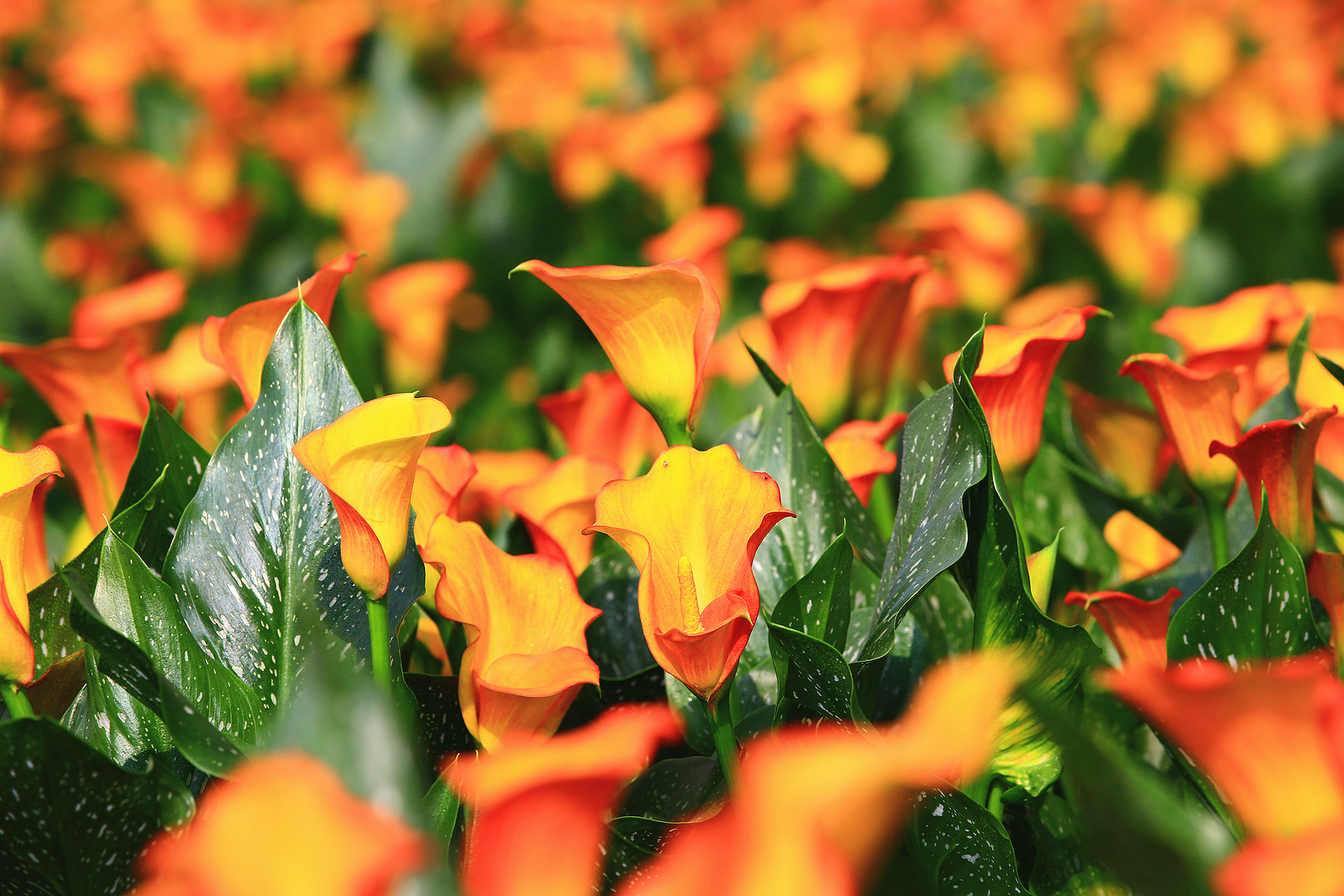 Zantedeschia aethiopica (calla lily). Start rhizomes of calla lily (Zantedeschia aethiopica) in late summer. They need big pots 10 inches (25cm) across. Keep the soil mix on the dry side until signs of growth appear, then increase watering. Calla lilies are tropical perennial bulbs, they can be grown as annuals outdoors in zones 2-7 and as a perennial in zones 8-11. Indoors give them average room temperatures and bright light through the winter. If the foliage dies back, keep the rhizome in its pots and overwinter it in a garage or cool basement. It will reappear in mid-spring.
Zantedeschia aethiopica (calla lily). Start rhizomes of calla lily (Zantedeschia aethiopica) in late summer. They need big pots 10 inches (25cm) across. Keep the soil mix on the dry side until signs of growth appear, then increase watering. Calla lilies are tropical perennial bulbs, they can be grown as annuals outdoors in zones 2-7 and as a perennial in zones 8-11. Indoors give them average room temperatures and bright light through the winter. If the foliage dies back, keep the rhizome in its pots and overwinter it in a garage or cool basement. It will reappear in mid-spring.
Late-blooming bulbs for cutting
 Amaryllis belladonna (belladonna lily). Amaryllis belladonna is commonly known as Belladonna lily or naked lady. Amaryllis belladonna is the sole member of the Amaryllis genus. Other lilies commonly called florist’s amaryllis that is sold for winter forcing are members of the genus Hippeastrum. Belladonna lily is grown for its showy, funnel-shaped blooms that appear in late summer and fall. The flowers are produced in umbels of 6 to 12 fragrant pink, red, and white flowers atop, fleshy leafless stems. The bright flowers atop leafless stems give Amaryllis belladonna its common name “naked lady.” Plant Belladonna lily in late spring or early summer or plant after bloom time in autumn. Belladonna lilies are grown as perennials in Zones 8 to 10.
Amaryllis belladonna (belladonna lily). Amaryllis belladonna is commonly known as Belladonna lily or naked lady. Amaryllis belladonna is the sole member of the Amaryllis genus. Other lilies commonly called florist’s amaryllis that is sold for winter forcing are members of the genus Hippeastrum. Belladonna lily is grown for its showy, funnel-shaped blooms that appear in late summer and fall. The flowers are produced in umbels of 6 to 12 fragrant pink, red, and white flowers atop, fleshy leafless stems. The bright flowers atop leafless stems give Amaryllis belladonna its common name “naked lady.” Plant Belladonna lily in late spring or early summer or plant after bloom time in autumn. Belladonna lilies are grown as perennials in Zones 8 to 10.
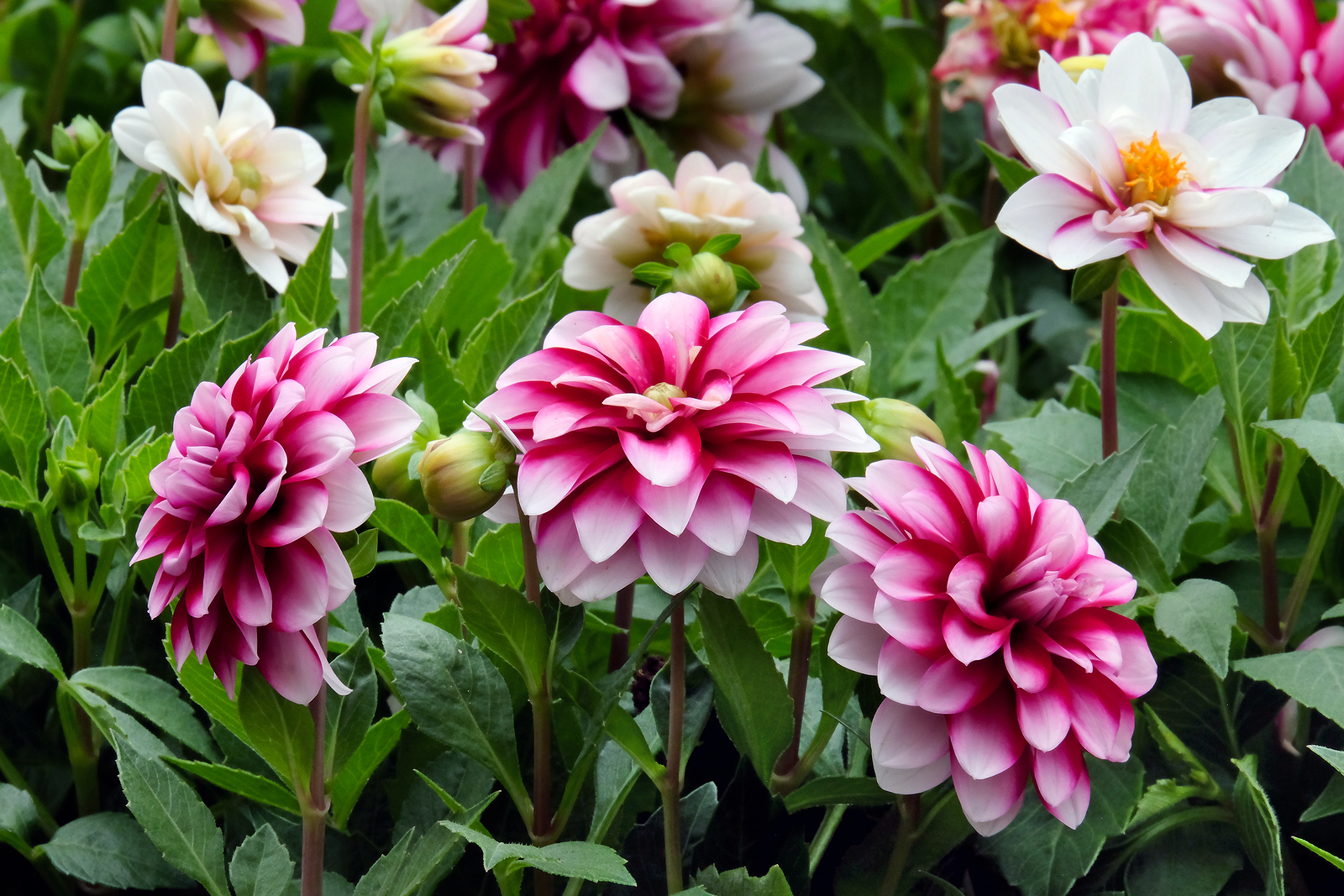 Dahlia X pinnata (dahlia). Tuberous roots of mature dahlias are available in season at garden centers, as are locally grown bedding plants, but dahlias are also easy to grow from seed. Short small-flowered varieties are often used as annuals. Tall large-flowered dahlias can be featured as specimens or massed in large bands or groups. From seed, start dahlias 8 weeks before the last frost at 65° to 75°F (18-24°C). Seeds germinate in a week or two. Seeds can be started outdoors after the last frost. Set plants or tuberous roots outdoors after the danger of frost passes as well.
Dahlia X pinnata (dahlia). Tuberous roots of mature dahlias are available in season at garden centers, as are locally grown bedding plants, but dahlias are also easy to grow from seed. Short small-flowered varieties are often used as annuals. Tall large-flowered dahlias can be featured as specimens or massed in large bands or groups. From seed, start dahlias 8 weeks before the last frost at 65° to 75°F (18-24°C). Seeds germinate in a week or two. Seeds can be started outdoors after the last frost. Set plants or tuberous roots outdoors after the danger of frost passes as well.
Related articles about cutting flowers:

